







 |
||||||
 |
 |
 |
 |
 |
 |
 |
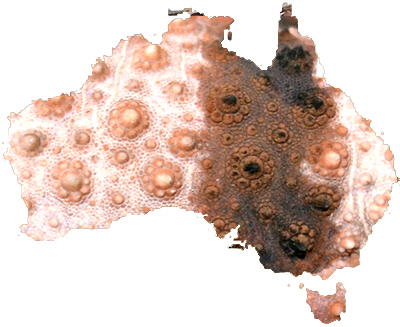
| About: The
two subspecies of banded knob-tailed
geckos were recently shown to be
full species. This was based on
genetic analysis as well as
morphology. The southern banded
knob-tailed gecko (Nephrurus
wheeleri) is endemic to WA. Range: This gecko is found in the Murchison and Goldfields region of Western Australia, ranging from around the latitude of Paynes Find in the south to Kumarina in the north. They can be found as far east as Leonora. Habitat: Southern banded knob-tailed geckos are typically found on more rocky soils throughout their range. They can be found in spinifex and shrub-land deserts. There appears to be niche partitioning between N. wheeleri and the midline knob-tailed gecko (Nephrurus vertebralis) with the latter being found on more sandy soils in their overlapping ranges. This may also be a bit of a behavioral separation, with the geckos emerging to different weather cues. On two trips to WA, we saw several N. vertebralis, whereas we didn't see any N. wheeleri. It may have been that the conditions were right for the former and not the latter. Natural History Notes: These geckos are adapted to desert habitats. They typically shelter in rock cracks or under rocks, rather than burrowing like their smooth-skinned relatives. The rough texture of the skin is an adaptation to a saxicolous life in the harsh desert of WA. Nephrurus wheeleri are typically nocturnal and will emerge to hunt various prey species. Spiders make up the bulk of the diet in the wild, but they are also known to feed on roaches, centipedes, and scorpions. They may also occasionally take vertebrate prey, including smaller gecko species. General Notes: These lizards do well on a diet of dubia roach nymphs, crickets, or other appropriately sized insects. They have a behavioral habit of kicking sand onto their backs, obscuring their beautiful pattern. They do well on a sandy substrate with hide areas. Insects provide the majority of their moisture, but the geckos and their cages should be sprayed down a few times each week to provide water. They will lick the droplets off of their heads and bodies as well as on the cage walls and furniture. These geckos appear to be similar in their husbandry and reproduction to N. cinctus, which are one of the most commonly bred species of Nephrurus. These geckos are fun to watch and we are enjoying them thoroughly. GET ADDICTED! |
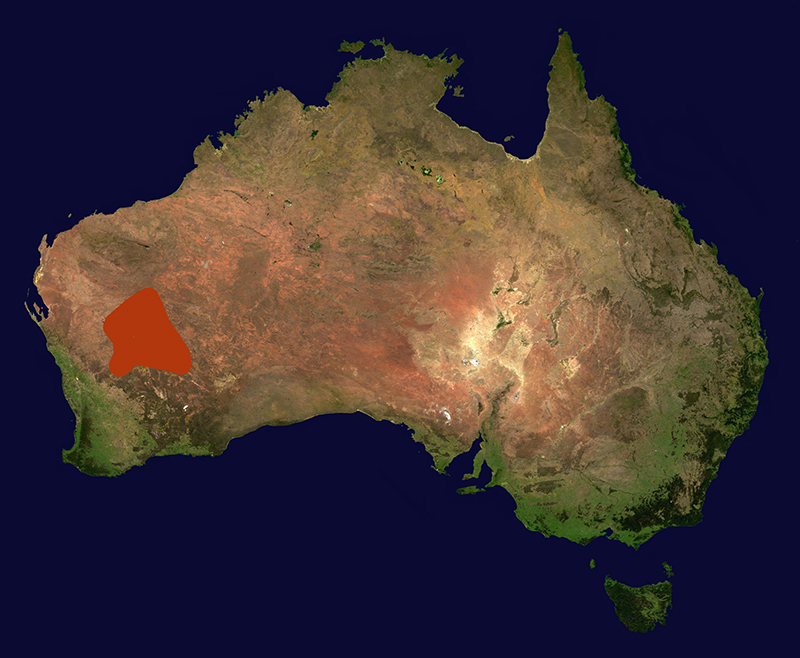
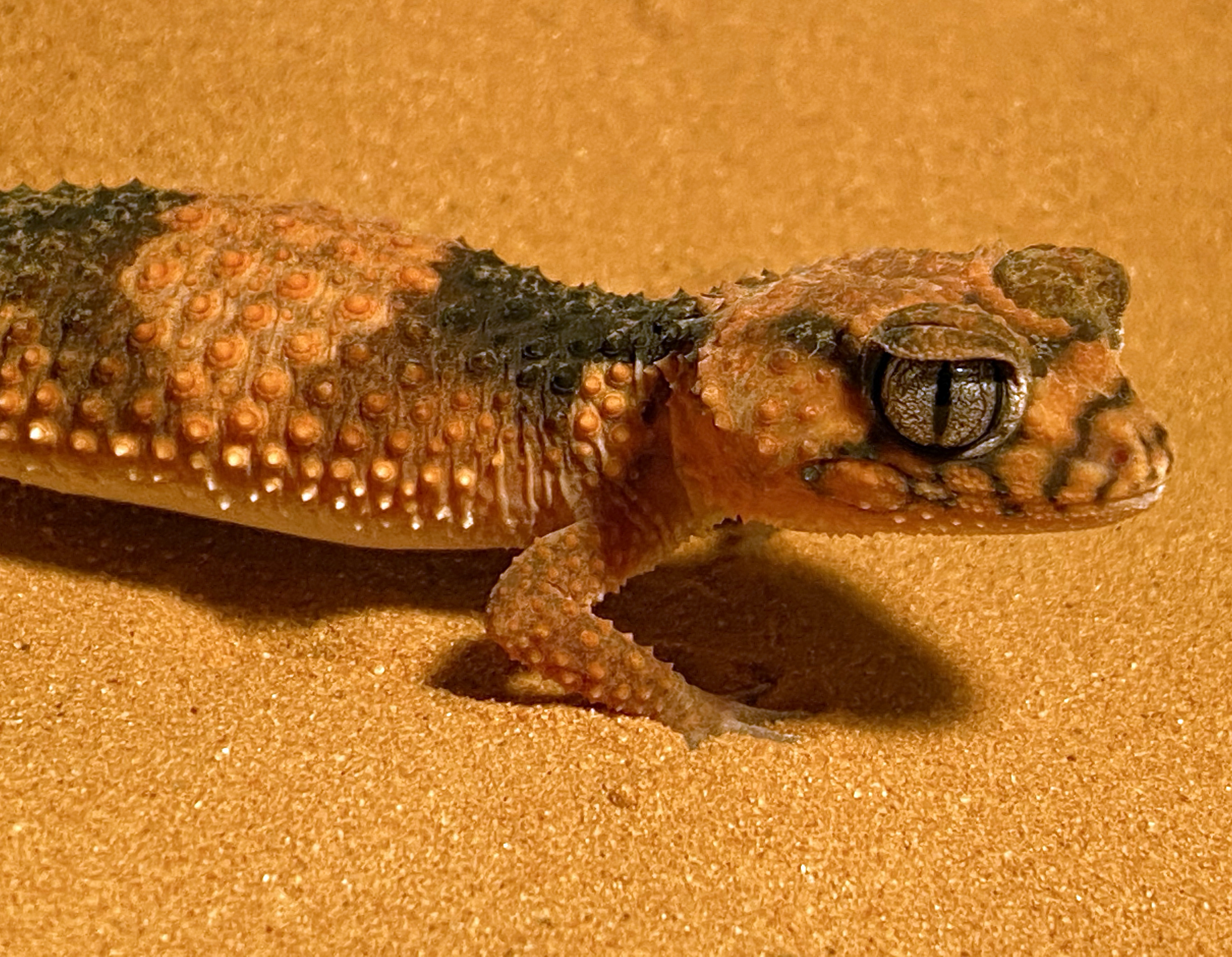
The face reticulations of
the Southern banded knob-tailed gecko (Nephrurus
wheeleri) are bold and one of the
distinguishing characteristics of this species
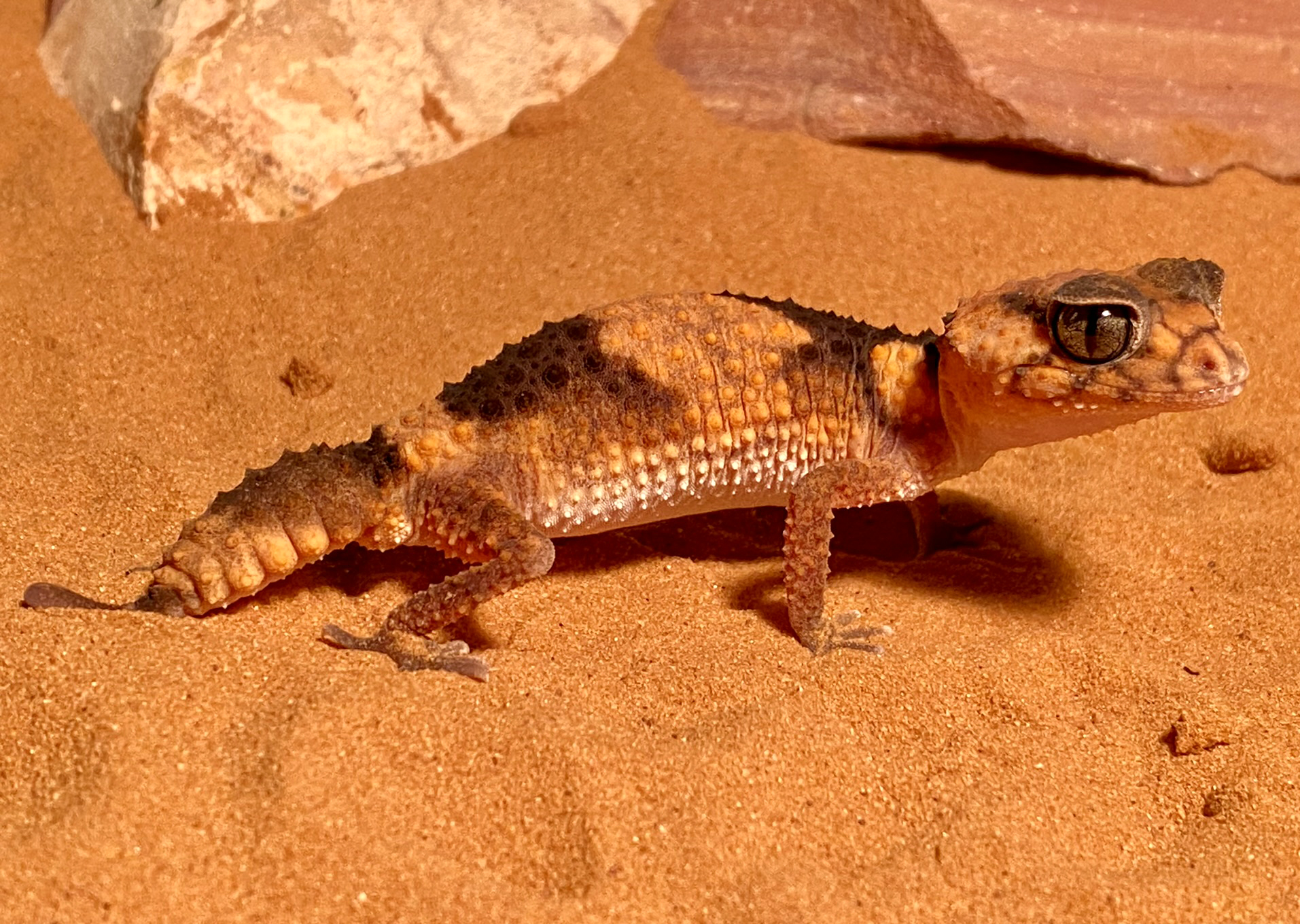
There are 4 dark bands, one
each on the neck and mid-body and two on the tail,
which is another diagnostic for N. wheeleri.
The neck and first large band are joined in this
species, whereas the northern species, the bands are
typically distinct.
|
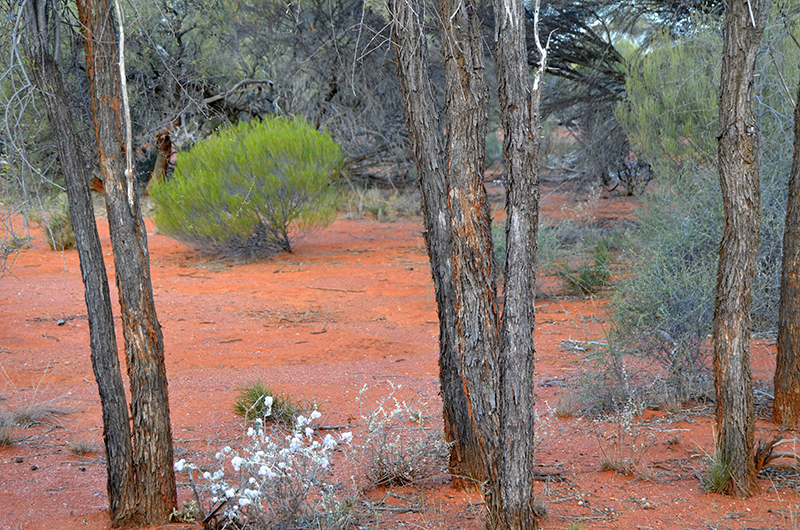
Habitat
of the southern banded knob-tailed gecko (Nephrurus
wheeleri)
|
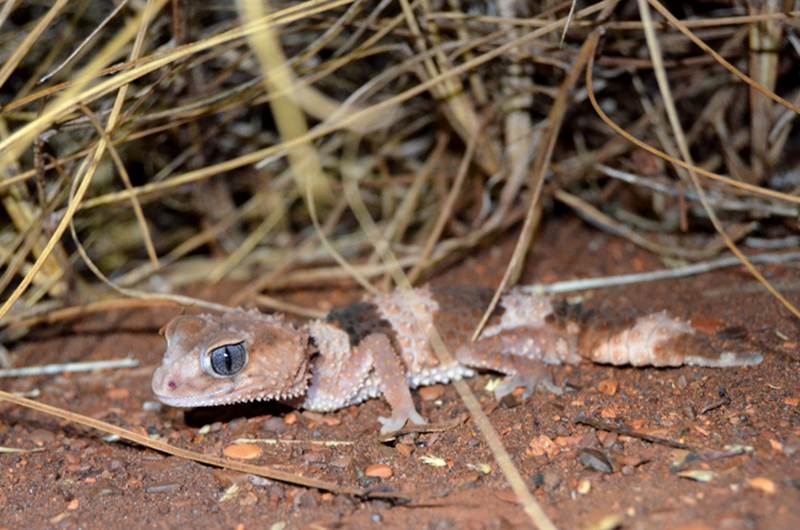
Although
we didn't find any N. wheeleri on two
separate trips to WA, we did find several northern
banded knob-tailed geckos (N. cinctus) in the
Pilbara. Compare the 5 bands to 4 and absence of
face reticulations.
|